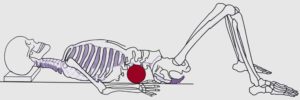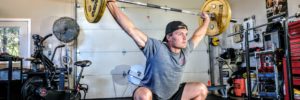
How to Deal With Chronic Pain
Today’s guest post comes from Brad Krause. Brad is the creator of SelfCaring.info – a website designed to help people improve their self-care practices and wellbeing. Note: This is Brad’s 2nd post this year, and if you haven’t already checked out his previous article “What’s the Big Deal About Self-Care?, I suggest you read it first. It’s a good read 
Are you overwhelmed by a recent diagnosis of chronic pain? It’s a natural reaction. Such a diagnosis can cause distress as you overcome the shock and grief of learning that your life is going to be different than you thought. You’re likely to be on a roller coaster of emotion as you go back and forth between accepting and grieving and denial and anger. This is normal, and it will pass.
The thing to know about chronic pain is that your reaction to it may cause as much pain as the physical damage. Developing active coping strategies to tackle your pain head-on can help you feel better.
Start by writing down all of your questions and discussing them with your doctor. See what your doctor plans for you to help cope, and come to an agreement on what you both will do to make it work. Part of that includes surrounding yourself with people who support you and letting go of those who don’t. The more control you have over other aspects of your life, the better you will be able to manage the stress and pain that feed each other.
One way to control your surroundings is to create a peaceful space at home. If you have a sanctuary to go to, you can look forward to it when you’re feeling pain. Create a space where you feel calm, secure and can avoid worry and sadness. Do you have places you like to read? Create a reading nook or room. Like fixing things? Make the garage a workspace. Whatever brings you peace and solace, create a space for that.
Paint the room in soft colours, a calming blue, or whatever you like. Add candles, fresh plants, and a fountain or other water feature. Remove clutter and make the space relaxing. Try to let in natural light, and put family photos around. If you like aromatherapy, lavender is particularly calming. The point here is to surround yourself with things that calm you and remove those that don’t.

Note from Remi: Fun fact. Painting a room blue gives you a 150% boost in energy ;). Image Licensed from “depositphotos.com/valuavitaly”
Once you have a peaceful place to retreat, create a diet and exercise plan. Regular gentle exercise like yoga or Pilates, can ease muscle pain and flood the body with endorphins, which are natural painkillers. Relaxation techniques like meditation, visualization, or guided imagery can help ease the mind and allow it to ignore some pain signals your body is sending. When your brain learns to manage the sensation of pain, you’ll feel less pain. These coping strategies can also help increase the relief you may get from medications or physical manipulations like massage or acupuncture (an acupuncture session usually costs $50 – $70).
Finally, you will want to incorporate a good anti-inflammation diet into your pain-management routine. Avoid refined carbohydrates like white bread and pastries or anything with refined sugar, including sodas. You’ll also want to avoid food and drinks with preservatives and additives, so diet soda is also a no-no.
Try to stay as natural as possible with what you eat and drink plenty of water. Replace fried foods with fresh or frozen vegetables in bright or dark colours (tomatoes, bell peppers, blueberries, etc.) and green, leafy plants like spinach and kale. If you prefer a non-vegetarian diet, avoid red meat and stick to lean meats and fish. Fresh fruits are preferable to juice, and olive oil is better than other cooking oils for anti-inflammatory properties. The Mediterranean diet is a good choice for its focus on fruits, vegetables, nuts, whole grains, fish, and healthy oils.
A good pain-management plan will include all of these pieces. You and your doctors should work together as a team to find the best solutions for you, which may include mental and physical therapy, as well as steroidal and non-steroidal anti-inflammatory drugs (NSAIDs). If you can learn to manage your pain without medications or with as few as possible, you’ll be less likely to have difficulties with addiction or possible accidental overdose. Together with a good sleep regimen, these techniques can help you to cope with your pain.
Thumbnail Image Licensed from “depositphotos.com/leolintang.”
About the Author
Brad Krause graduated from college in 2010 and went straight to the corporate world at the headquarters of a popular retail company. But what started as a dream job soured quickly. After four years of working 15-hour days and neglecting his health, he decided enough was enough. Through aiding a friend during a tough time, Brad discovered his real calling-helping people implement self-care practices that improve their overall wellbeing. He created SelfCaring.info to share his knowledge and the many great resources he finds on his self-care journey.











